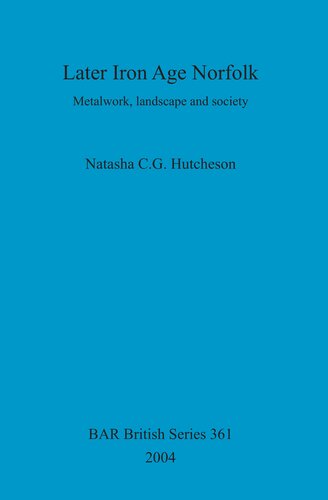

Most ebook files are in PDF format, so you can easily read them using various software such as Foxit Reader or directly on the Google Chrome browser.
Some ebook files are released by publishers in other formats such as .awz, .mobi, .epub, .fb2, etc. You may need to install specific software to read these formats on mobile/PC, such as Calibre.
Please read the tutorial at this link: https://ebookbell.com/faq
We offer FREE conversion to the popular formats you request; however, this may take some time. Therefore, right after payment, please email us, and we will try to provide the service as quickly as possible.
For some exceptional file formats or broken links (if any), please refrain from opening any disputes. Instead, email us first, and we will try to assist within a maximum of 6 hours.
EbookBell Team

4.1
50 reviewsThis research aims to investigate later Iron Age society in Norfolk through a study of largely unstratified metal artefacts. In particular, it examines and interprets patterns in the distribution and deposition of torcs, coins and items of horse equipment across the landscape of Norfolk. Any research on later Iron Age Norfolk cannot, of course, take place without reference to Snettisham, the Iceni and Queen Boudica. This work does not neglect these important aspects of Norfolk's past, but sets them in their broader historical context and goes on to investigate whether this region was culturally 'backward' or peripheral to southern and south-eastern England. To achieve these aims, this research focuses on examining patterns in the distribution and deposition of torcs, coins and items of horse equipment across and within the landscape of Norfolk. Northern East Anglia does not boast a well-known and documented settlement record; a problem that has enhanced the perception that this region was culturally peripheral to southern and south-east England in the later Iron Age. Despite the lack of detailed information regarding settlement archaeology, Norfolk does appear to be rich in later Iron Age metalwork. The majority of metal artefacts known from the region have been recovered by metal-detectorists or by chance discovery. In particular, three categories of metalwork are the focus of this study: torcs, coins and items of horse equipment. 162 finds are detailed in the catalogue, each with a drawing.